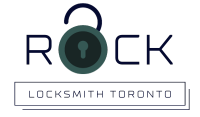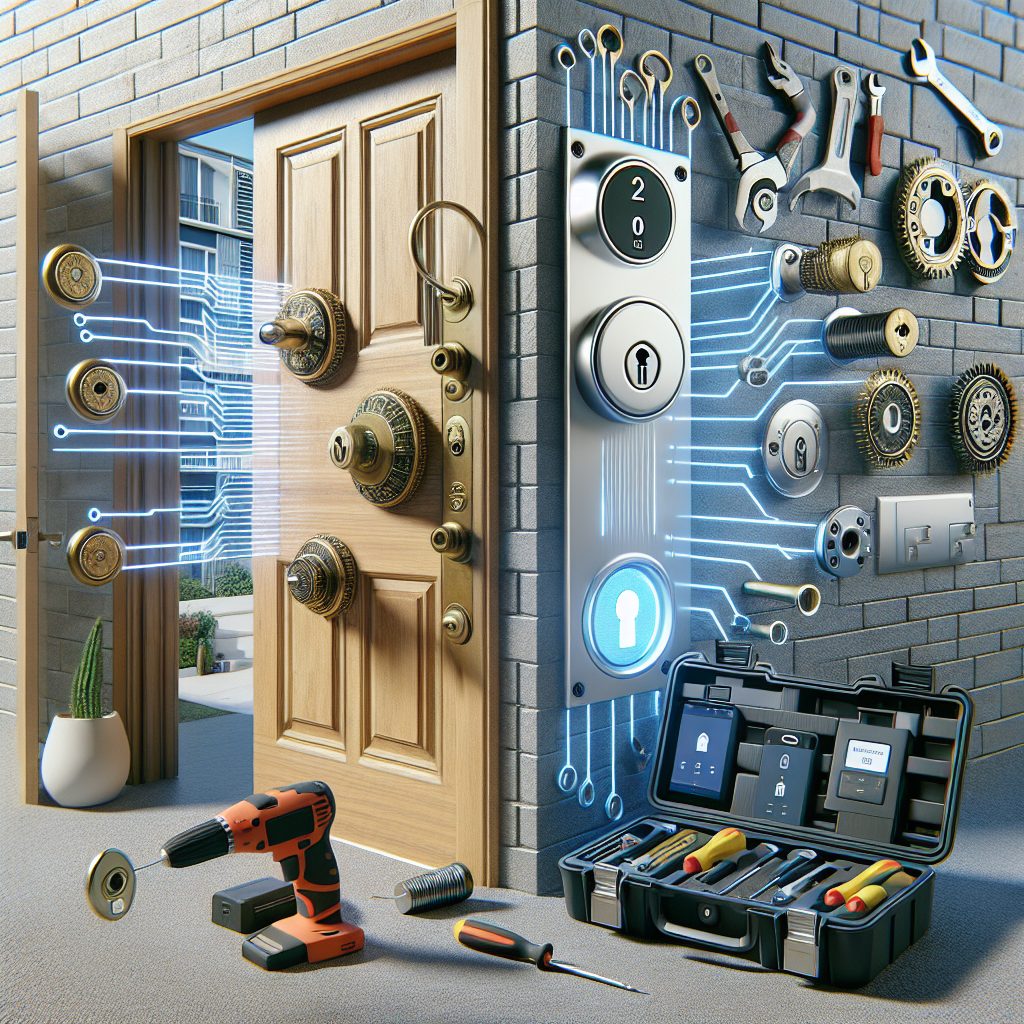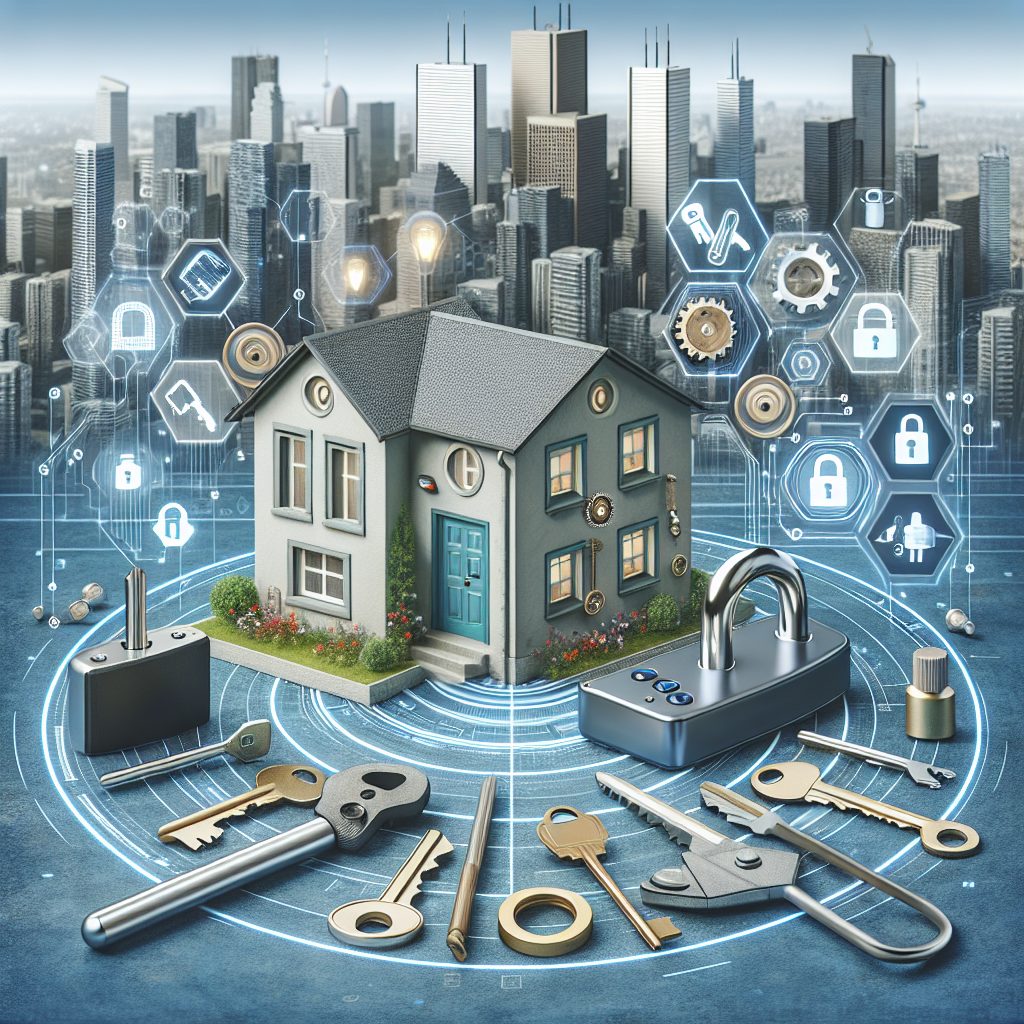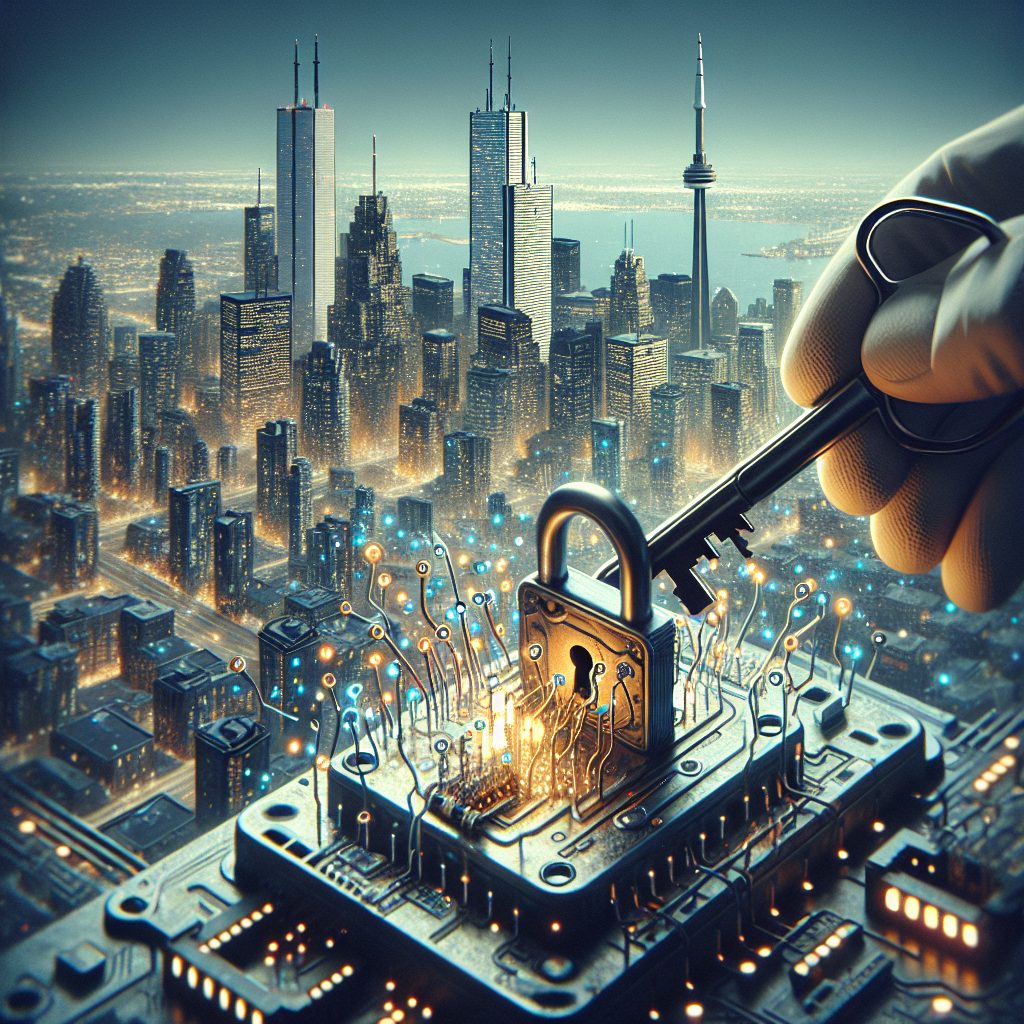Upgrade to Smart Locks: Toronto Installation Guide
In today’s digital age, upgrading your traditional locks to smart locks is becoming increasingly popular. But what exactly are smart locks? These innovative devices are designed to provide a higher level of security and convenience by allowing homeowners to control access to their properties using their smartphones or other smart devices. With the ability to lock and unlock doors remotely, monitor who enters and exits your home, and receive real-time notifications, smart locks are revolutionizing the way we protect and manage our homes.
One of the biggest impacts of upgrading to smart locks in Toronto is the enhanced security they offer. Unlike traditional locks, which can be easily picked or forced open, smart locks use advanced encryption technology to safeguard against unauthorized access. Additionally, many smart lock models come equipped with features such as tamper alerts, which immediately notify homeowners if someone is attempting to tamper with the lock. This added layer of security provides peace of mind and ensures that your home is well-protected at all times.
Now that we understand the benefits of smart locks, let’s delve into the key takeaways of this Toronto installation guide. We will discuss the different types of smart locks available in the market, their compatibility with existing door hardware, and the installation process. By the end of this article, you will have a comprehensive understanding of how to upgrade to smart locks in Toronto and enjoy the convenience and security they offer. So, let’s get started!
Key Takeaways
1. Choose the right smart lock based on your needs: Consider factors such as compatibility, installation requirements, and additional features offered by different smart lock options. This ensures you select a lock that suits your preferences and requirements.
2. Take proper measurements and prepare your door for installation: Measure the dimensions of your door and ensure it meets the requirements specified by the smart lock manufacturer. Make necessary adjustments, such as drilling holes or removing excess material, to ensure a proper fit during installation.
3. Follow the manufacturer’s instructions: Each smart lock may have different installation procedures, so it is crucial to carefully read and follow the provided instructions. This will help you avoid any potential installation pitfalls and ensure a successful setup.
4. Ensure a stable internet connection: Most smart locks require a stable Wi-Fi or Bluetooth connection to function properly. Make sure your lock is within range of your router and ensure your internet connection is reliable to avoid any potential connectivity issues.
5. Take extra security measures: While smart locks provide convenience, it is important to remember that they are not foolproof. Consider additional security measures such as enabling two-factor authentication, keeping firmware up to date, and regularly changing access codes to enhance the overall security of your smart lock system.
What is the Best Way to Upgrade to Smart Locks: Toronto Installation Guide?
Types of Smart Locks
There are different types of smart locks available in the market for upgrading your home security. Some popular options include keypad smart locks, Bluetooth-enabled locks, and Wi-Fi connected locks. Each type has its own features and benefits, so it is important to choose the one that suits your needs and preferences.
Benefits of Upgrading to Smart Locks
Upgrading to smart locks offers several advantages compared to traditional locks. Firstly, smart locks provide convenience as you can unlock your door using a smartphone app or a key code, eliminating the need for physical keys. Additionally, smart locks offer enhanced security features such as tamper alerts, real-time notifications, and the ability to monitor and control access to your home remotely.
Considerations Before Installing
Before proceeding with the installation of smart locks, there are a few important considerations to keep in mind. Firstly, ensure that your existing door and lock mechanism are compatible with the smart lock you intend to install. Check the dimensions, requirements, and specifications provided by the manufacturer. It is also necessary to have a stable and reliable Wi-Fi connection if you plan on using Wi-Fi connected smart locks. Lastly, make sure to have the necessary tools and follow the manufacturer’s instructions carefully during the installation process.
Step-by-Step Installation Guide
1. Gather all the required tools: screwdrivers, drill, measuring tape, and the smart lock kit.
2. Remove the existing lock from the door by unscrewing the screws and detach it from the door.
3. Install the smart lock mechanism into the door following the manufacturer’s instructions. Ensure it is securely fixed.
4. Connect the smart lock to your home’s Wi-Fi network or pair it with your smartphone, depending on the type of lock.
5. Set up any additional features or configurations on your smartphone or through the lock’s app.
6. Test the lock by locking and unlocking it using the designated methods (smartphone, keypad, or key code).
7. Ensure that the lock is functioning properly before completing the installation process.
Tips for a Successful Installation
1. Carefully read the installation instructions provided by the manufacturer and follow them step by step.
2. Take accurate measurements of your door and ensure that the smart lock is compatible with your door’s dimensions.
3. Test the smart lock’s functions before fully installing it to identify any potential issues or defects.
4. Securely attach the smart lock to your door to prevent any tampering or unauthorized access.
5. If you are unsure about the installation process, consider hiring a professional locksmith to ensure proper installation and functionality.
Are Smart Locks a Worthwhile Upgrade?
Upgrading to smart locks offers numerous benefits in terms of convenience, security, and peace of mind. With the ability to monitor and control access to your home remotely, smart locks provide an added layer of protection. By eliminating the need for physical keys, you can also avoid the risks associated with lost keys or unauthorized duplication. While there is an initial investment involved, the long-term advantages make smart locks a worthwhile upgrade for enhanced home security.
FAQ – Upgrade to Smart Locks: Toronto Installation Guide
1. Can I install a smart lock on my own?
Yes, most smart locks come with detailed installation instructions that make the process relatively simple. However, if you are not confident in your abilities, it’s always a good idea to hire a professional locksmith for a flawless installation.
2. Are smart locks compatible with all types of doors?
Smart locks are designed to be compatible with most standard doors. However, it’s important to check the specific product’s specifications to ensure compatibility with your door type. Some smart locks work well with deadbolt-style doors, while others may require slight modifications for unique door designs.
3. Can I still use a physical key with a smart lock?
Yes, one of the great features of smart locks is the ability to use both digital and physical keys. Most smart locks allow you to unlock the door using a traditional key as a backup, ensuring convenience and peace of mind.
4. Do smart locks require an internet connection?
Yes, in order to fully utilize the smart features of the lock, an internet connection is typically required. This allows you to control and monitor the lock remotely through a smartphone app or web interface. However, some models offer offline functionality for basic lock operations even without an internet connection.
5. How secure are smart locks?
Smart locks are designed with advanced security features to safeguard your home. They often use encryption protocols to protect communication between the lock and your smartphone, ensuring that unauthorized individuals cannot easily gain access. Additionally, many smart locks have built-in alarm systems and tamper detection mechanisms for enhanced security.
6. Can I integrate a smart lock with my existing home automation system?
Yes, most smart locks are compatible with popular home automation systems such as Amazon Alexa, Google Assistant, and Apple HomeKit. This allows you to control your lock alongside other smart devices in your home, creating a seamless and interconnected smart home experience.
7. Will a smart lock drain the battery quickly?
Smart locks are designed to be energy-efficient and have batteries that can last for several months or even up to a year. The actual battery life depends on factors such as usage frequency and lock features. The lock usually provides low battery warnings well in advance, giving you ample time to replace the batteries.
8. Can a smart lock be hacked?
While no system is completely immune to hacking, smart locks use advanced encryption and security measures to minimize the risk. As long as you follow best practices, such as using strong passwords and keeping your lock’s software up to date, the chances of a successful hacking attempt are extremely low.
9. Are smart locks weather-resistant?
Smart locks are typically weather-resistant and designed to withstand various weather conditions. However, it’s important to still consider the manufacturer’s specifications and ensure that the lock is suitable for your specific climate to prevent any potential issues in the long run.
10. What if my smartphone’s battery dies or I lose it?
Most smart locks provide alternative methods of access, such as using a PIN code or a physical key, to ensure you can still enter your home even if your smartphone is not available. It’s always a good idea to have backup options in place to prevent any inconveniences.
Final Thoughts
Upgrading to smart locks offers a myriad of benefits, from enhanced security to convenient access control. The Toronto installation guide ensures that residents can easily embrace this technological advancement without any hassle. By following the installation instructions, homeowners can enjoy the convenience of keyless entry and remote control, all while knowing their homes are protected by state-of-the-art security features.
Investing in smart locks not only enhances the overall security of your home but also adds a touch of modernity and sophistication to your lifestyle. With the ability to integrate with existing home automation systems, smart locks become an integral part of a connected smart home ecosystem. The Upgrade to Smart Locks: Toronto Installation Guide empowers homeowners to make a seamless transition, taking their home security to new heights.






Recent Comments